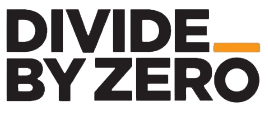The Future of Automotive Suspension Systems
The Benefits of 3D Printing and Investment Casting for Suspension Parts
1. Lightweighting:
• Material Efficiency: 3D printing enables the use of advanced materials such as CF and GF composites, which are significantly lighter than traditional metals while maintaining or even enhancing strength and durability. When combined with investment casting, these materials can create intricate, lightweight structures.
•Example: A 3D-printed and investment cast control arm can reduce the overall weight of the suspension system, leading to improved fuel efficiency and better vehicle performance.
2. Optimization of Load-Bearing Structures:
• Complex Geometries: Additive manufacturing allows for the creation of intricate, lattice-like structures that are optimized for load-bearing. Investment casting further enhances these structures, making them more robust and reliable.
•Example: Coil spring retainers designed with optimized load paths can handle greater stress and distribute loads more evenly, improving suspension performance and durability.
3. Customization for Different Vehicle Models:
• Tailored Designs: 3D printing offers unparalleled flexibility in design, enabling manufacturers to produce custom-fit suspension parts for different vehicle models and performance requirements. Investment casting ensures these parts meet high-quality standards.
•Example: Custom bushings designed to meet the specific damping and vibration needs of a high-performance sports car can be rapidly prototyped, investment cast, and produced, ensuring optimal performance.
Addressing Common Objections with Divide By Zero Technologies
Objection: 3D Printing is Too Slow for Production Parts
Objection: Concerns About Strength and Durability
Objection: Cost of 3D Printing Technology
Sparking New Ideas: The Future of 3D-Printed and Investment Cast Suspension Parts
The potential applications of 3D printing and investment casting in automotive suspension systems are vast. Here are some innovative ideas to consider:
•Integrated Sensor Technology: Embedding sensors directly into suspension components to monitor performance in real-time and provide data for predictive maintenance.
•Modular Designs: Creating modular suspension parts that can be easily replaced or upgraded, enhancing vehicle customization and performance tuning.
•Sustainable Materials: Exploring the use of eco-friendly composites to produce lightweight and durable suspension components, aligning with the industry’s push towards sustainability.


